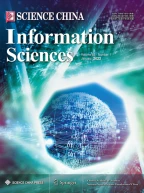Abstract
As generalization of the fractional Fourier transform (FRFT), the linear canonical transform (LCT) has been used in several areas, including optics and signal processing. Many properties for this transform are already known, but the convolution theorems, similar to the version of the Fourier transform, are still to be determined. In this paper, the authors derive the convolution theorems for the LCT, and explore the sampling theorem and multiplicative filter for the band limited signal in the linear canonical domain. Finally, the sampling and reconstruction formulas are deduced, together with the construction methodology for the above mentioned multiplicative filter in the time domain based on fast Fourier transform (FFT), which has much lower computational load than the construction method in the linear canonical domain.
Similar content being viewed by others
References
Bracewell R N. The Fourier integral and its applications. 3rd ed. Boston: McGraw Hill, 2000
Namias V. The fractional Fourier transform and its application in quantum mechanics. J Inst Math Appl, 1980, 25(4): 241–265
Almeida L B. The fractional Fourier transform and time-frequency representations. IEEE Trans Signal Processing, 1994, 42(11): 3084–3091
Mendlovic D, Ozaktas H M. Fractional Fourier transforms and their optical implementation. J Opt Soc Am, 1993, 10(9): 1875–1881
Almeida L B. Product and convolution theorems for the fractional Fourier transform. IEEE Signal Processing Letters, 1997, 4(1): 15–17
Sudarshan S, Vikram M G. An uncertainty principle for real signals in the fractional Fourier transform domain. IEEE Trans Signal Processing, 2001, 49(11): 2545–2548
Xia X G. On band limited signals with fractional Fourier transform. IEEE Signal Processing Letters, 1996, 3(3): 72–74
Tao R, Qi L, Wang Y. Theory and Applications of the Fractional Fourier Transform (in Chinese). Beijing: Tsinghua University Press, 2004. 73–91
Tao R, Deng B, Wang Y. Research progress of the fractional Fourier transform in signal processing. Sci China Ser F-Inf Sci, 2006, 49(1): 1–25
Barshan B, Kutay M A, Ozaktas H M. Optimal filters with linear canonical transformations. Opt Commun, 1997, 135: 32–36
Scharf L L, Thomas J K. Wiener filters in canonical coordinates for transform coding, filtering, and quantizing. IEEE Trans Signal Processing, 1998, 46(3): 647–654
Bultan A. A four-parameter atomic decomposition of chirplets. IEEE Trans Signal Processing, 1999, 47(3): 731–745
Mendlovic C, Lohmann A W. Space-bandwidth product adaption and its application to superresolution: fundamentals. J Opt Soc Am A, 1997, 14(3): 558–562
Erden M F, Kutay M A, Ozaktas H M. Repeated filtering in consecutive fractional Fourier domains and its application to signal restoration. IEEE Trans Signal Processing, 1999, 47(5): 1458–1462
Bernardo L M. ABCD matrix formalism of fractional Fourier optics. Optical Eng, 1996, 35(3): 732–740
James D F V, Agarwal G S. The generalized Fresnel transform and its applications to optics. Opt Commun, 1996, 126: 207–212
Hua J, Liu L, Li G. Extended fractional Fourier transforms. J Opt Soc Am A, 1997, 14(12): 3316–3322
Pei S C, Ding J J. Eigen functions of linear canonical transform. IEEE Trans Signal Processing, 2002, 50(1): 11–26
Moshinsky M, Quesne C. Linear canonical transformations and their unitary representations. J Math Phys, 1971, 12(8): 1772–1783
Zeng Y C, Zhang B J, Wu P Y. Signal and System (in Chinese). Beijing: Beijing Institute of Technology Press, 1992. 179; 203–204
Wang S Y. Digital Signal Processing (in Chinese). Beijing: Beijing Institute of Technology Press, 2004. 158–160
Candan C, Kutay M A, Ozaktas H M. The discrete fractional Fourier transform. IEEE Trans Signal Processing, 2000, 48(5): 1329–1337
Author information
Authors and Affiliations
Corresponding author
Rights and permissions
About this article
Cite this article
Deng, B., Tao, R. & Wang, Y. Convolution theorems for the linear canonical transform and their applications. SCI CHINA SER F 49, 592–603 (2006). https://doi.org/10.1007/s11432-006-2016-4
Received:
Accepted:
Issue Date:
DOI: https://doi.org/10.1007/s11432-006-2016-4
